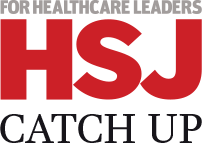- Talks about boosting use of private sector at an early stage
- National framework expected to be agreed
Talks are under way between NHS England and independent sector providers about how to best use their capacity if coronavirus causes a surge in demand.
HSJ understands talks are taking place between private provider representatives and NHSE nationally, as well as with some local NHS organisations.
Although at an early stage, the discussions may lead to a national framework or deal to allow the NHS to more quickly buy services in the event of major covid-19 demand surges.
The simplest option for drawing on private sector support would be to send more people to private providers for planned operations, to free up NHS capacity, as they already carry out hundreds of thousands of procedures for the NHS each year. Chief medical officer Chris Whitty indicated last week the NHS may need to “slow down or postpone anything that is postponable” to deal with the virus, which would mean cancelling planned operations.
Other options could include: asking private firms to take over the running of whole service lines for a period, potentially including more high-risk operations than are usually outsourced; to step in to help in places where NHS services have been hit by demand and staff shortages; or to take some non-complex coronavirus patients who need hospital beds.
These might not all prove possible or useful, and the details of the talks are not known.
Statistical modelling based on attempts to estimate the covid-19 infection and admission rate suggest the inpatient NHS bed supply could easily be outstripped by demand, if there is a major outbreak. The government has acknowledged that intensive care beds are likely to come under particular pressure, and has indicated it is seeking to expand capacity.
However, most UK private hospitals do not have any intensive care capacity, although a small number do.
There were about 8,482 acute overnight beds in the independent sector as of October, according to the most recent report by analysts LaingBuisson, compared to around 100,000 in the NHS.
Guidance issued to local NHS managers last week said they should “review mutual aid agreements with other care providers including specialist, private and voluntary agency providers”. Senior figures involved in planning the response in several areas told HSJ that private sector beds should play an important part, but that they were anticipating a national lead on how.
An Independent Healthcare Providers Network spokesman said: “Independent sector providers are closely following advice from the NHS and Public Health England on how to contain coronavirus, including reminding patients to call NHS 111 instead of travelling to a hospital or clinic if they’ve been to affected areas or have been in close contact with someone with coronavirus.
“Independent providers are also working closely with local healthcare systems to ensure that they are providing all possible support to patients and the public.”
Nuffield Trust director of strategy and operations Helen Buckingham added: “There is a long history of cooperation between the NHS and the independent sector at times of pressure.
“It is important that the NHS explores all routes for securing capacity in the context of coronavirus, and it is reassuring that these discussions are happening now. It is important that plans are developed at local level, supported by national guidance.”
An NHSE spokeswoman said: “As you’d expect, work is under way to explore all practical options to increase capacity, and as the outbreak continues every sector of the economy is going to have to look at what role they can play in helping.”
Meanwhile, NHSE today announced measures in partnership with Google, Twitter, Instagram and Facebook to combat “fake news” about coronavirus. They include Google search pointing people first to verified NHS guidance when looking for “coronavirus treatments” or “coronavirus symptoms”; and working to suspend accounts producing false information.
Updated at 9.30am on 10 March with new information about the number of acute sector beds.
Source
Information provided to HSJ
Source Date
March 2020



























6 Readers' comments